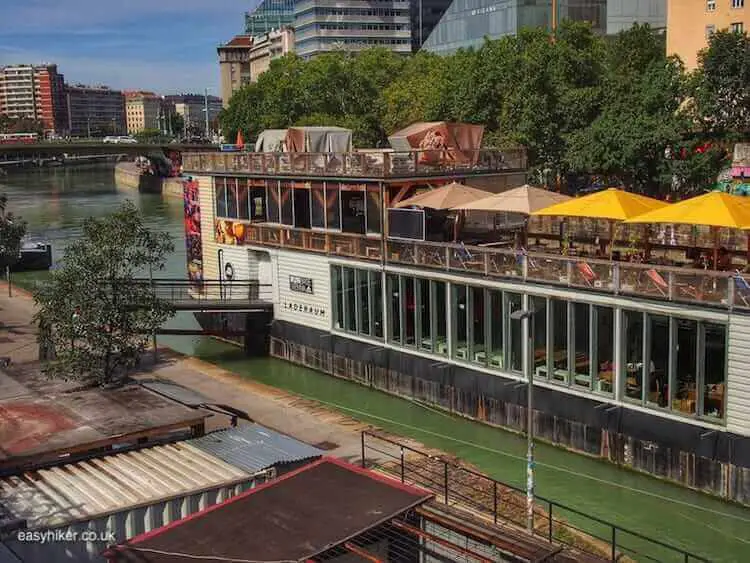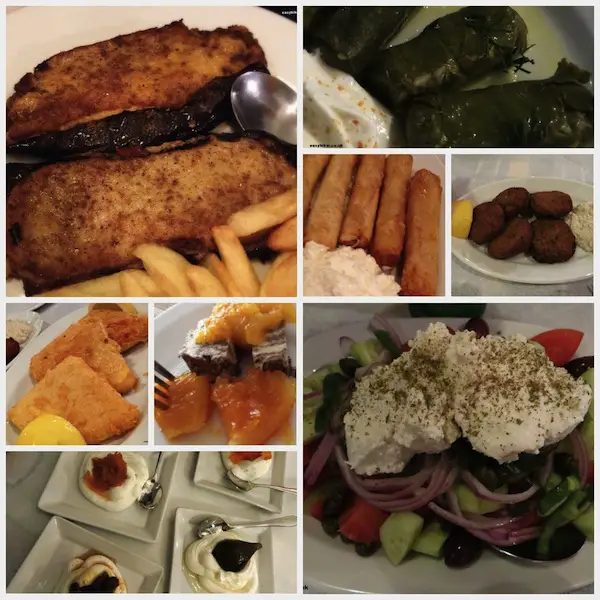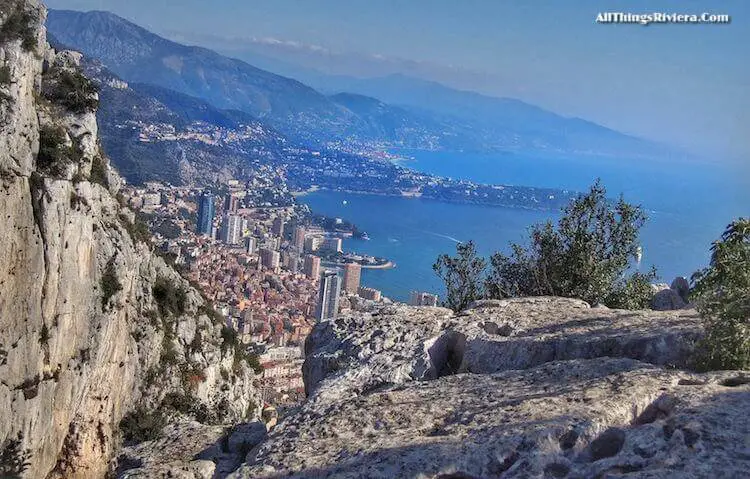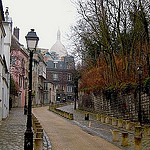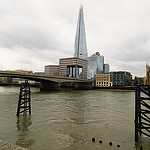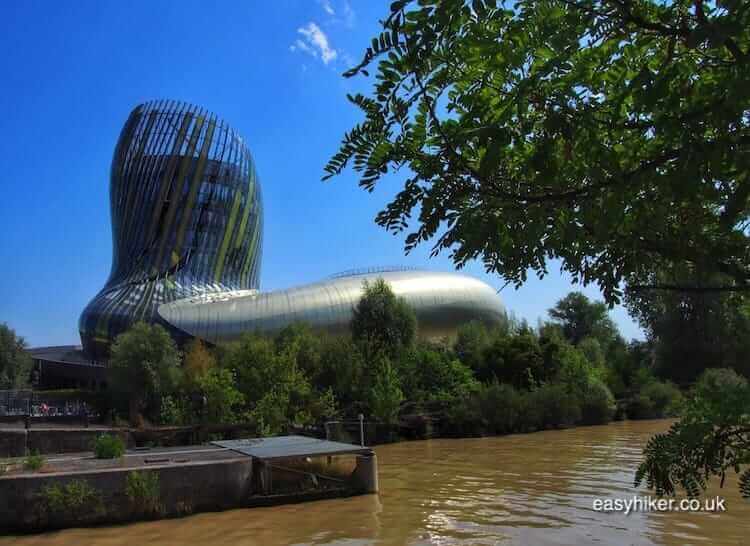After last week’s long, hard slough through Vienna’s musical history, today we will be offering you something completely different.
A short Vienna walk which is as short as it is sweet – in the spirit of 19th century concerts where it was not at all frowned upon to round up the performance of a serious piece with a light-hearted number: a polka, say, or a waltz, following a Beethoven symphony.
See today’s short Vienna walk as a frivolous encore
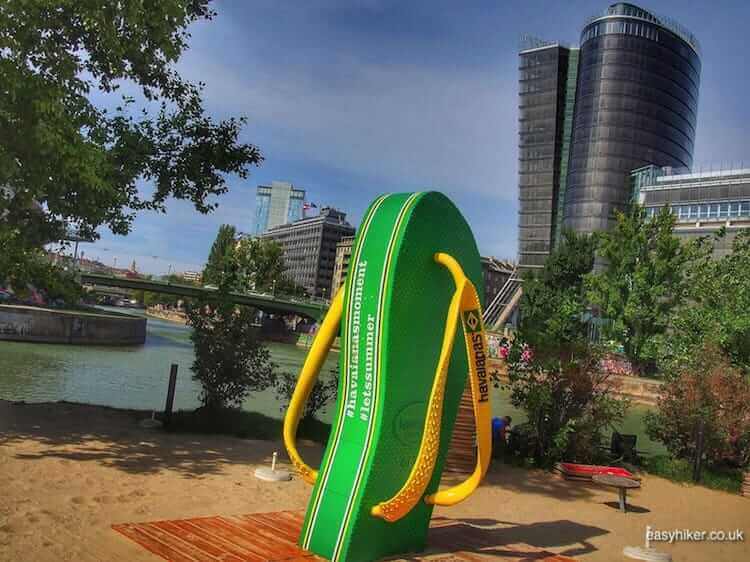
It is also a “Vienna” walk in more than one way. The city, as you may know, was not quite built “on the Danube” – the Danube passes the city by and has ever done so.
In fact, Vienna was built with the express intent of avoiding the river and its, at the time, unpredictable moods and flooding patterns.
As a consequence, you will see very little of Vienna if you walk on the banks of the Danube – or even the Donaukanal, its urban offspring.
But many of the city’s most famous attractions such as Schönbrunn Palace, the Theatre an der Wien, and Otto Wagner’s (only partly finished) Art Nouveau boulevard line the banks of the small tributary river which has provided the city with its name: the Vienna.
But famous sites apart, this largely unsung and under-appreciated small river is an attraction in itself. This is what we are going to find out today.
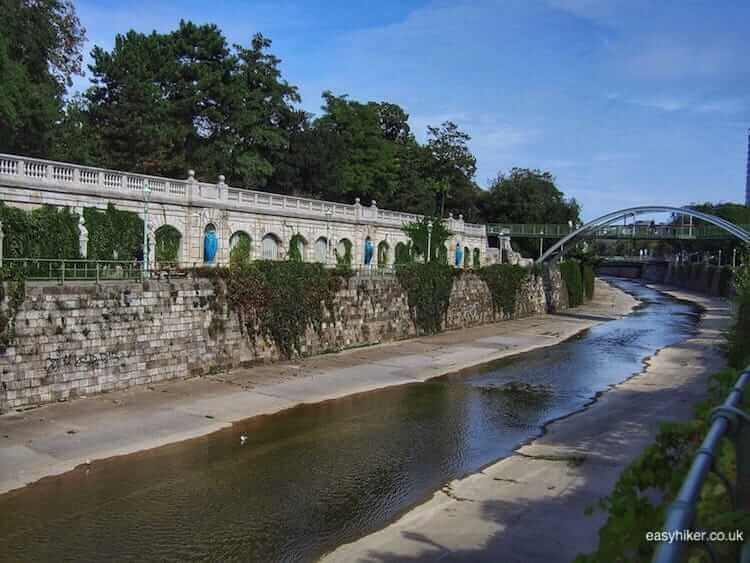
We start this short Vienna walk in the Municipal Park, just behind the Johann Strauss statue and a few steps away from the subway station Stadtpark (also built by Otto Wagner).
This is where the Vienna river re-emerges, having flowed underground for most of its route through (or rather underneath) the streets of central Vienna.
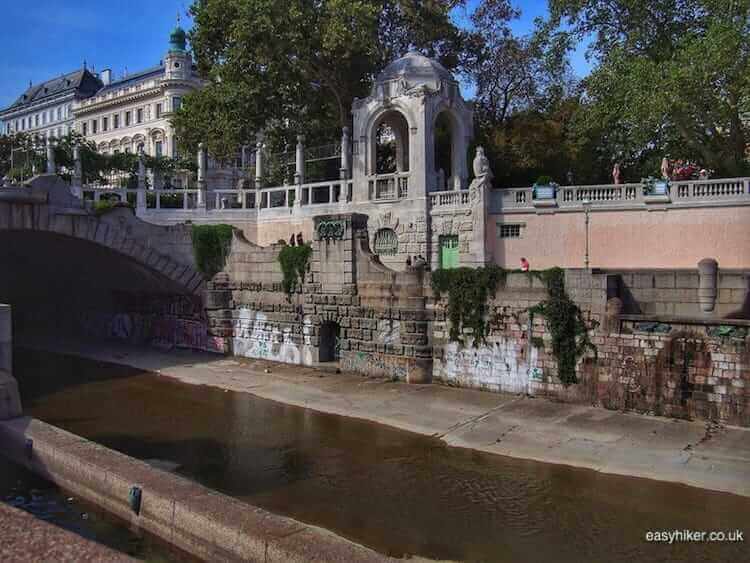
The walk may be short, but it is long enough to have two very distinct halves: first comes the section that leads you past the park and its Imperial splendour.
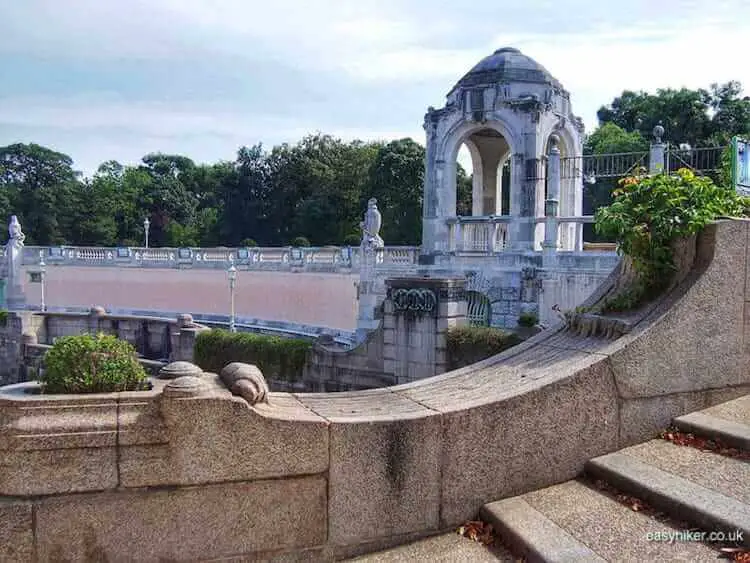
The footpath that runs through this section has also been clearly designed to comply with the requirements of the late 19th century sense of bourgeois good taste.

Suddenly, however, the mood of the piece changes, and tones of a gritty urban realism creep in.
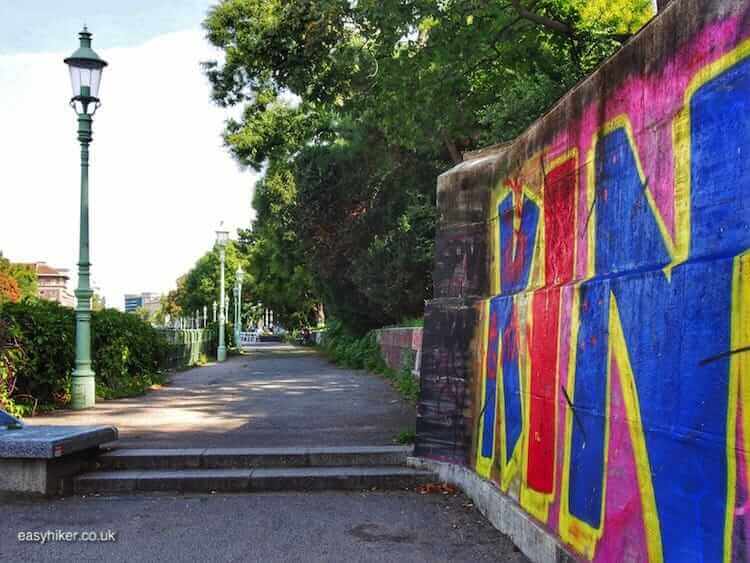
The underlying bass line of the surrounding cityscape darkens …

… and is occasionally enriched by the sound of trains that cross the river on their way from one subterranean tunnel into the next.
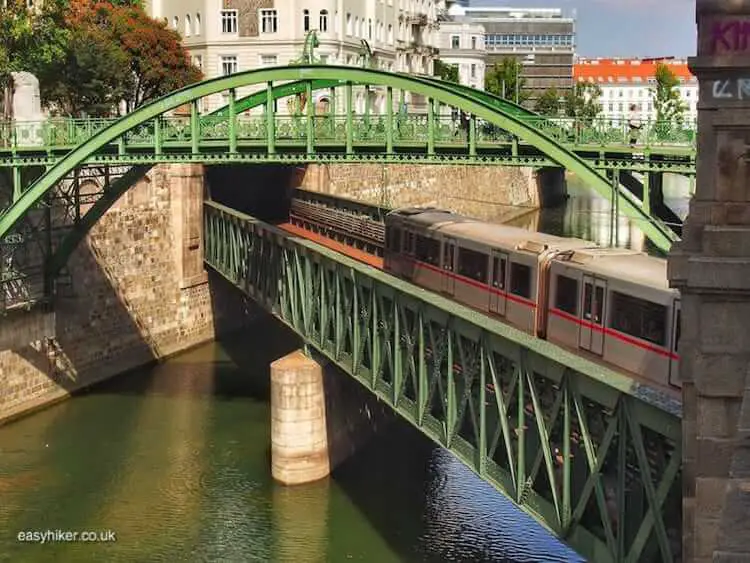
And short walk or not, this being Vienna, there is always room for the build-up to grand theatrical finale …
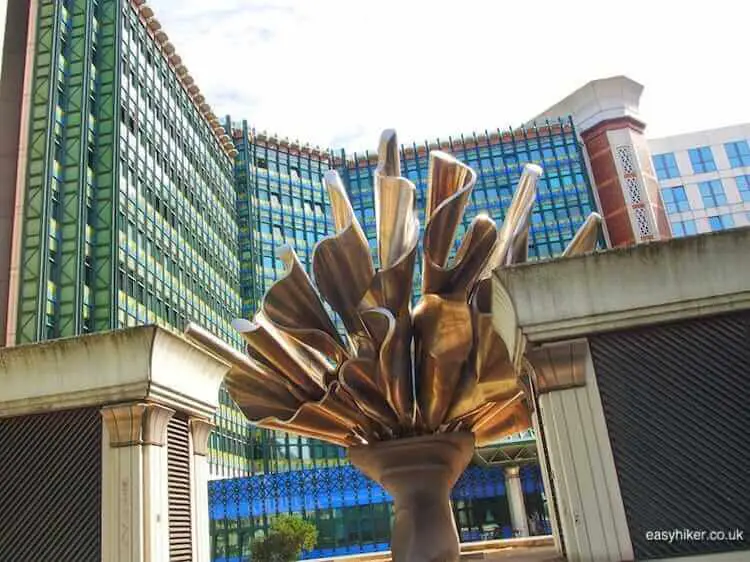
… featuring first Gero Schwanberg’s steel sculpture “Waving Flags” (in front of the Inland Revenue HQ).
And then, the final destination, the place where the short life of the Vienna (the river is only 34 km long) comes to its inevitable end ..
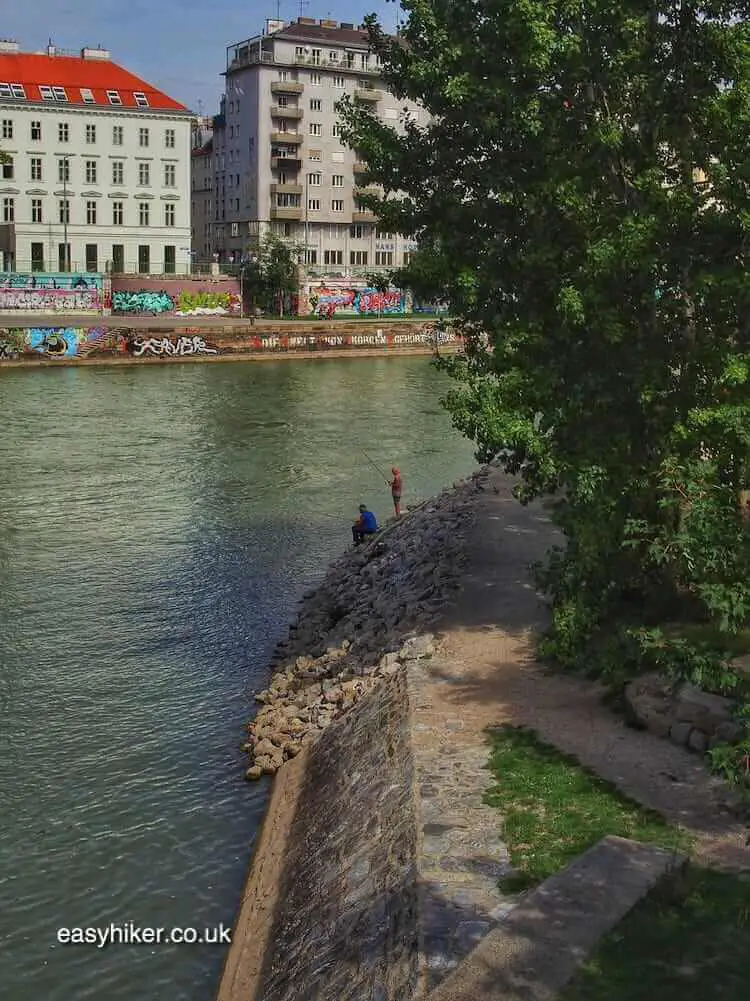
… when the tributary flows into the Donaukanal, formerly the main branch of the Danube but now fully walled in like the Vienna itself.
This is where the this short Vienna walk along its river ends, but you will find many other things to do in the area: over the past few years, the banks of the Donaukanal have experienced a veritable boom and are now lined with some of Vienna’s most celebrated bars, night life spots and “urban beach clubs”.
So if you are really lucky, you may perhaps catch a glimpse of autumnal sunshine for this year’s last opportunity of refreshing your summer tan.

If the weather is less friendly, just take a short stroll along the Canal – you will discover that this area is also buzzing with indoor activities.
Moored in the Canal, for example, is Europe’s largest swimming gym-cum-leisure-centre.
